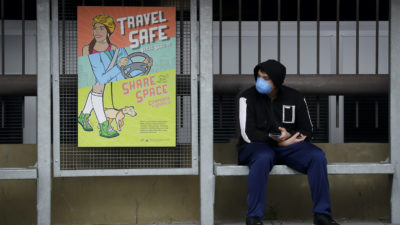- Almanac: Logan Pearsall Smith on the vanity of writers“Every author, however modest, keeps a most outrageous vanity chained like a madman in the padded cell of his breast.” Logan Pearsall Smith, Afterthoughts
The Irish Buddhist Monk Who Faced Down the British Empire
Dhammaloka’s story sheds new light on the history of non-violent resistance
What’s so new about New Municipalism? Progress in Human Geography
Berlin Launches €100 Million Aid Program For Freelance Arts Workers
 “The Berlin Senate announced … that it would soon be offering €100 million ($107 million) in €5,000 ($5,366) grants to freelance workers and small businesses in the cultural sector. In addition, the senate is offering another €300 million ($322 million) in loans for the retail, hotel, restaurant, and cultural industries.” – Artnet
“The Berlin Senate announced … that it would soon be offering €100 million ($107 million) in €5,000 ($5,366) grants to freelance workers and small businesses in the cultural sector. In addition, the senate is offering another €300 million ($322 million) in loans for the retail, hotel, restaurant, and cultural industries.” – Artnet
What’s The Purpose Of Daydreaming?
 Daydreaming is taken very seriously within scientific circles, where it is more accurately referred to as mind wandering. The level of interest in this area runs more or less parallel to that of the default network, and that is no coincidence either. The neural activity that can be observed when a person is daydreaming is very similar to that found in the default network. The control situation when taking neural measurements is also one in which the brain is not performing any tasks, and so we start daydreaming. We let our thoughts run free and start associating different memories with each other. – LitHub
Daydreaming is taken very seriously within scientific circles, where it is more accurately referred to as mind wandering. The level of interest in this area runs more or less parallel to that of the default network, and that is no coincidence either. The neural activity that can be observed when a person is daydreaming is very similar to that found in the default network. The control situation when taking neural measurements is also one in which the brain is not performing any tasks, and so we start daydreaming. We let our thoughts run free and start associating different memories with each other. – LitHub
Thanks To Social Distancing, Drive-In Movie Theaters Are Having A Comeback

“Drive-in movie theaters may seem like a blast from the past, something out of the 1950s or ’60s. Numerous baby boomers haven’t gone for decades; Gen Xers and millennials, perhaps never. But there are still 305 of them in the United States” — and they’re seeing increased demand from stir-crazy customers. – The New York Times
Why Do People Read/Watch Apocalyptic Fiction In Crises?
No one seems to fully agree on why reading books or watching movies about apocalyptic pandemics feels appealing during a real crisis with an actual contagious disease. Some readers claim that contagion fiction provides comfort, but others argue the opposite. – The Conversation


